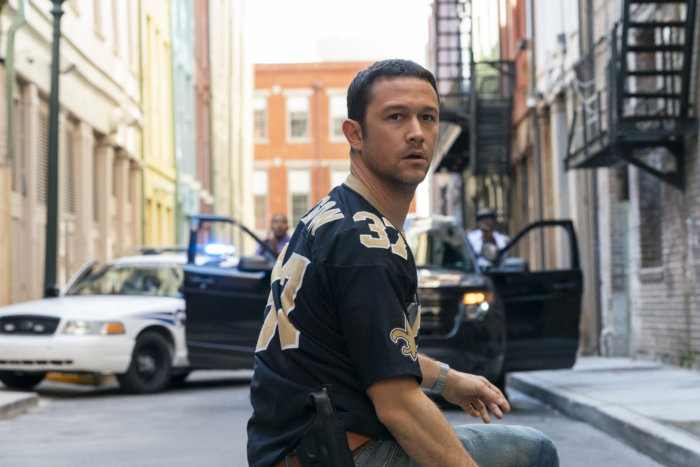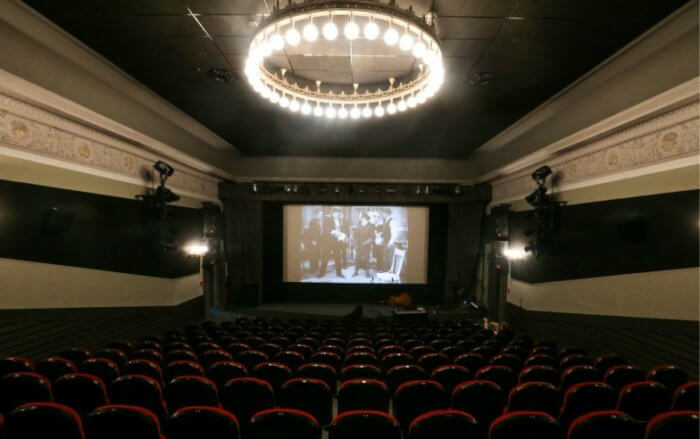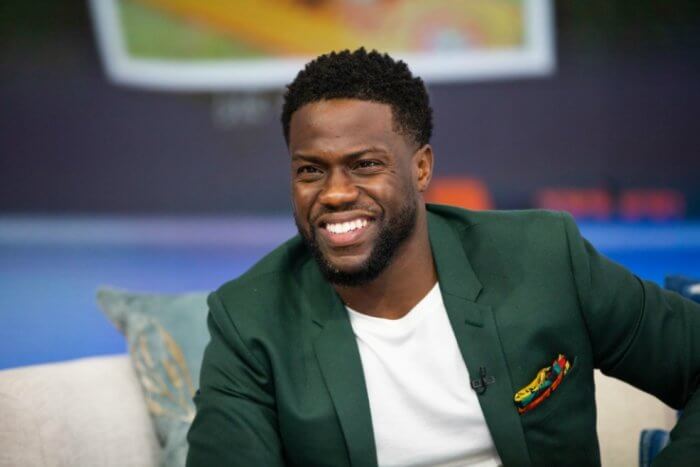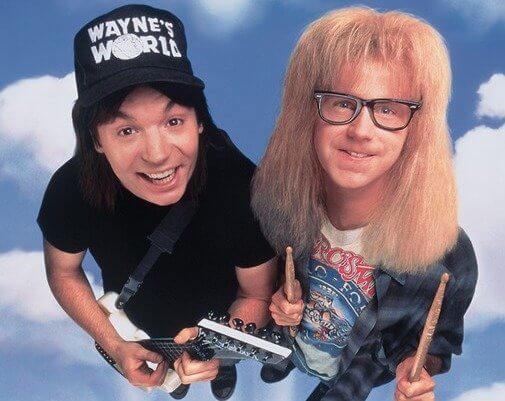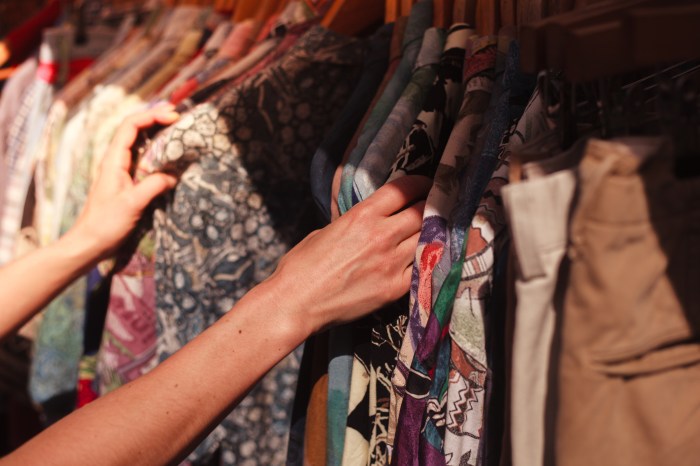When you think of Disney animation, typically, what might come to mind are a few different movies— ‘The Incredibles’, ‘Frozen’— and the list goes on and on. Obviously, there are a team of creative minds working behind the scenes to create whatever animated world the feature film’s plot follows, but it takes much more than just a vision and some elbow grease to make these movies possible. It actually takes a lot of innovation and even creating new technologies.
“Films always begin with directors, writers and storyboarding,” says Karl Li, a Senior Software Engineer with Disney Studios. Li, who hails from Philadelphia, has worked on a variety of films from the major company including ‘Zootopia’, ‘Moana’, ‘Ralph Breaks the Internet’ and the company’s latest animated feature, ‘Raya and the Last Dragon,’ which comes out Friday.
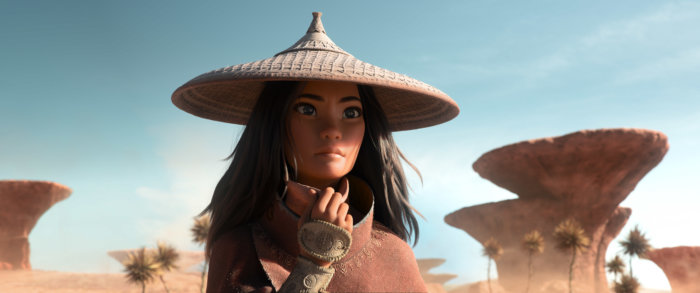
Li specifically works on a department that Disney Studios refers to as their Hyperion Renderer team, which officially is described as the studios’ state-of-the-art, in-house production physically-based renderer, used on all productions since 2014. Li, who went to North Penn High School and the University of Pennsylvania, joined a year later in 2015.
Once a film’s storyboard is mapped out, the next step for the engineering, production and technology teams is to go into what Li calls a “bidding process,” where the software engineers are briefed. At that point, they decide what technologies they need to achieve the level of entertainment that the story is asking for.
“That’s sort of where my department comes in,” says Li, as he explained how his work on “Raya and the Last Dragon” evolved over the production. “For this film, the directors and DPs (directors of photography) wanted a cinematic and almost tangible look. So, the film has very natural lighting and a lot of the camera work is similarly natural. They wanted a lot of shots to have very shallow depth of field—that means lots of out-of-focus stuff and little details for plot elements in the film.”
Disney’s “Raya and the Last Dragon” takes place in a magical world called Kumandra, which we learn in the beginning of the film is a place where both humans and dragons live harmoniously together. However, after a group of monsters known as the Druun threaten the land, the dragons selflessly sacrifice themselves to save humanity. That noble act leaves behind all of the dragon’s magic in one gemstone, which consequently leads to a war between the people of Kumundra, all of whom want to hold that power for themselves. The once unified world is then split into five lands, and 500 years later, we get to see Raya and her father act as guardians to the dragon’s gemstone until chaos ensues.
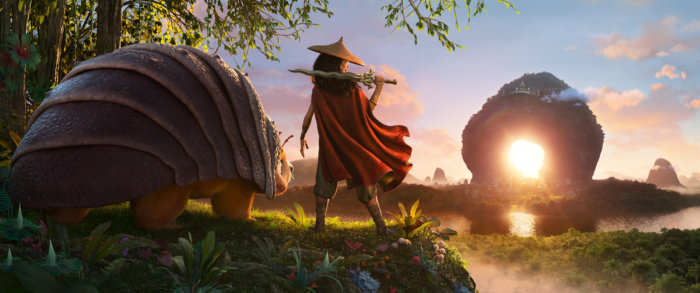
Creating a whole new world presents a challenge in itself, but what Li and his team tackled for this project specifically dealt with a lot of the cinematography. That meant looking into CG animation, or as Li calls it, polymetrics or atmospherics. He also says that “Raya” used more of these animation tricks than any film Disney has ever done before, but that’s par for the course at the company.
“In every film that I’ve worked on, we’ve had to figure out something new,” says Li. “One of the things [one of the head of studios] used to say was: Disney animation is the kind of place where the art and the story challenges the technology, and the technology rises to the occasion. At the same time, advancements in the technology inspire the story and the art to push things further. So, we never really sit still and we never really want to be sitting still because, every time we’re able to make something new, it will inspire the artists to do something really awesome and amazing. They’ll take what we’ve built and they’ll push it far beyond what we ever expected it to be able to go. So, we’re always pushing each other and raising the level of our filmmaking. As a result, there’s always something new that we have to figure out.”
That’s also what he says is the best part of his job as well. “For me, that’s a huge thing. It makes life really interesting and fun. But it’s really cool knowing that for each film, we’re trying to make the best film that we’ve ever made. It’s really cool being able to work with the artists and to know that at any given moment, we’re trying to do something that we’ve never done before.”
“Raya and the Last Dragon” may be in a fictional world, but the influence and land is set in Southeast Asia. The setting isn’t the only cultural influence that Disney put into the film either, those who worked on the feature also made it a point to get every detail right, and make the values in Asian culture front and center in the story.
“Coming from an Asian background, that meant a lot to me. Early in the film, the producer, director and head of story put together, started talking to a lot of us with Asian backgrounds in the studio and asking us about the small things coming from Asian culture. Things like little habits.”
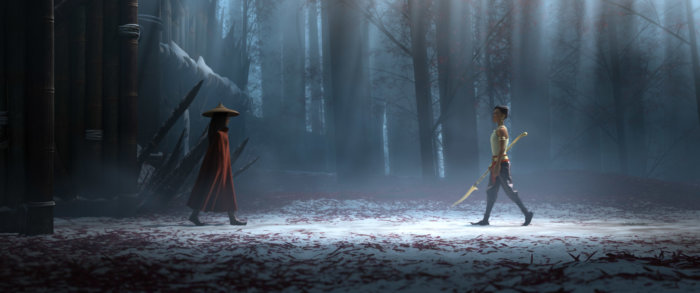
One of those small details was having the characters take off their shoes whenever they enter a temple. “It’s a small detail but it’s also something that most people who grew up in Asian cultures and backgrounds know. So, the fact that the filmmakers took the time to make sure that was right was a really cool thing to see,” continues Li.
“Raya” follows one strong cultural value from Asian culture, which is collectivism versus individualism. As Li explains, it’s not that the individual is not valued, but it’s this idea of teamwork over a single hero or a single individual that is emphasized more. In “Raya,” after the war breaks out and the lands are split, so are the people. Throughout Raya’s journey—which we don’t want to give too much away of—that theme of trust and working together is really highlighted. And with this film, Disney truly has hit the nail on the head showcasing the point they want to get across in a very entertaining and tangible way.
“That’s something we talked about earlier on as a cultural value, but I think it’s something more universal than an Asian cultural value. I think it’s a very broad and a universally applicable kind of thing—especially this day and age in the pandemic. That sense of we have to work together to make it through all of this…To me that’s a really cool thing to see in the film.”
“Raya and the Last Dragon” hits theaters and is available to order on Disney + on March 5.

























